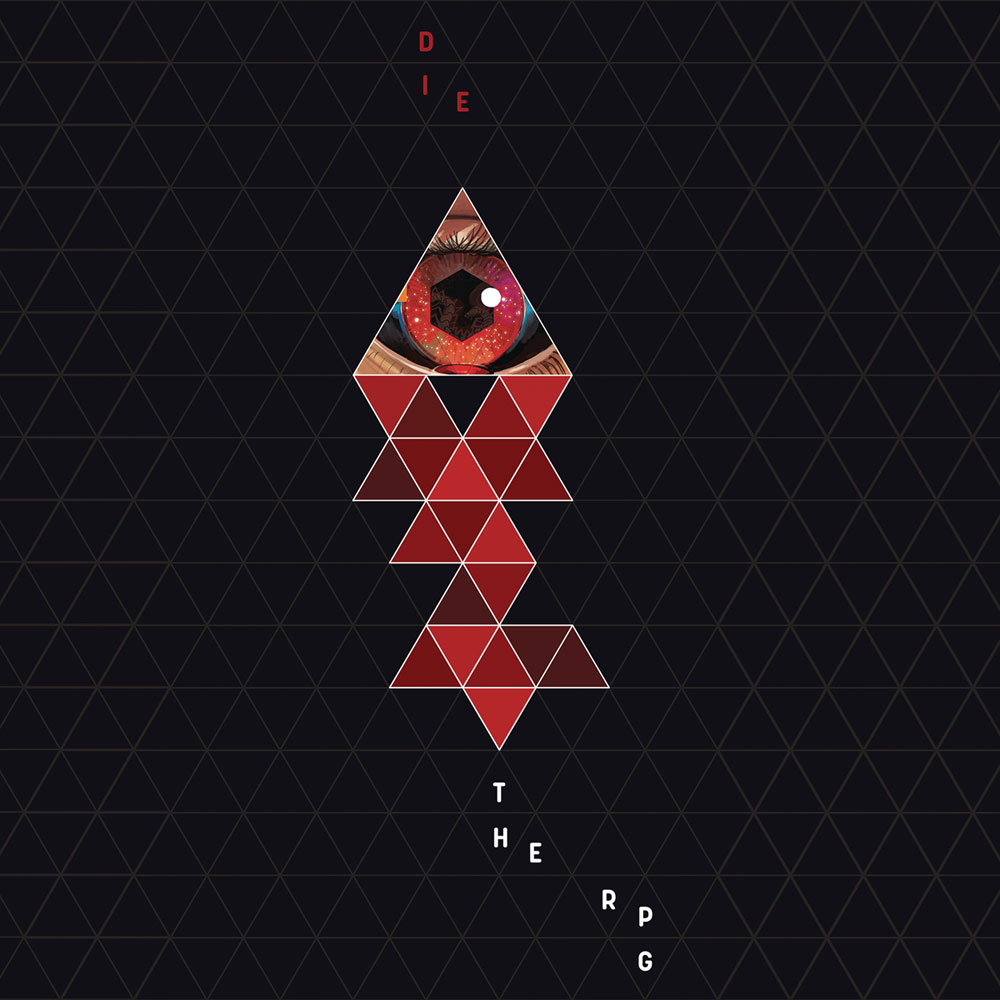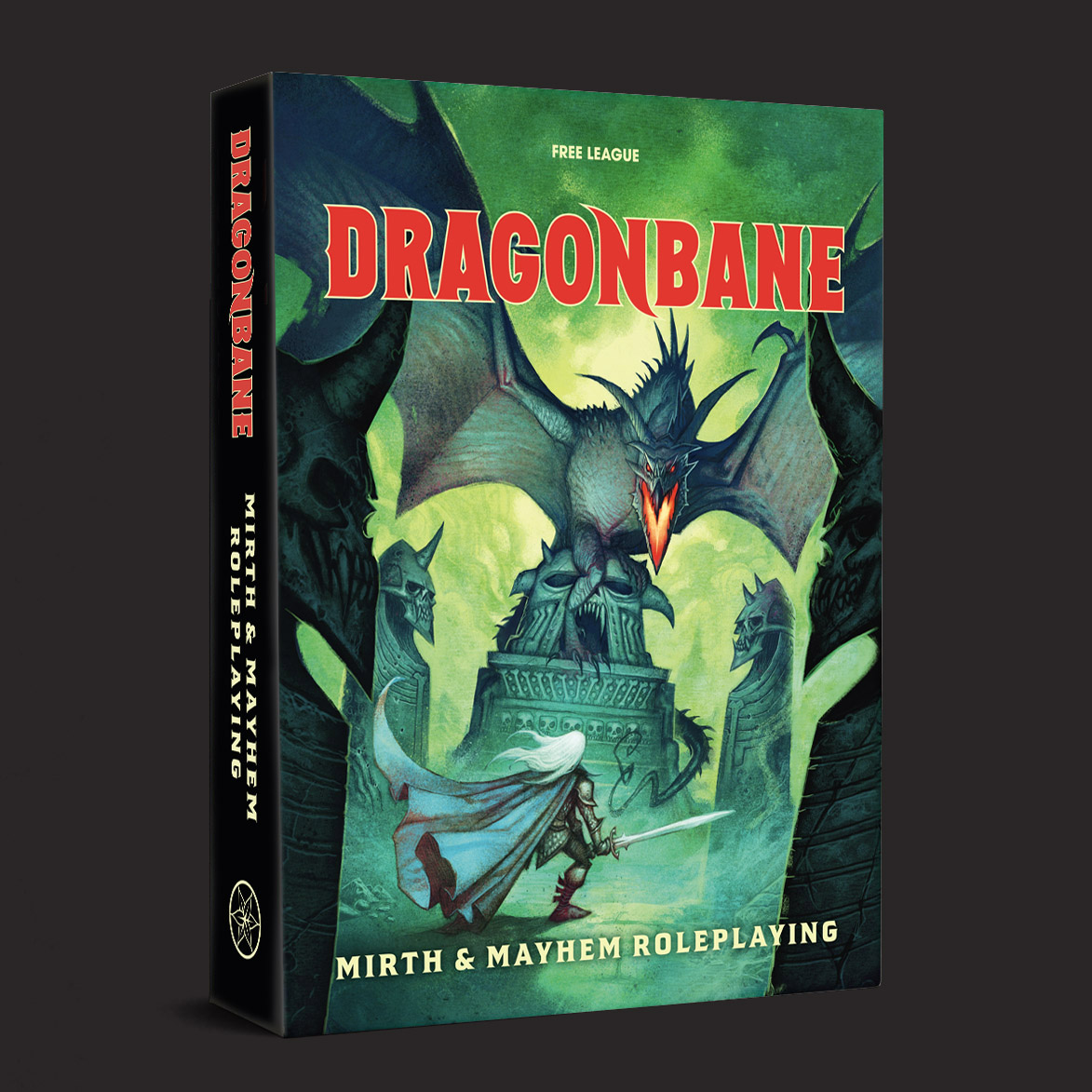#1: Running Two Games At Once is Good for my Brain
For the past couple of years, I’ve fallen into a bit of a flow where I run two games at once. I was running a Cyberpunk Red campaign for a group of 6, and was quickly finding that I didn’t really care for the system. It was still fun, although I started resorting to wacky mission gimmicks to keep me from self-immolating. I had so many systems I wanted to run, but I was trapped with one I didn’t like! It wasn’t just the system either. I discovered that 6 players were a hair too many for me, and it was straining my ability to make an engaging campaign that fit differing player expectations.
Around the time I was most “over” Cyberpunk, I ran across a funky game called DIE RPG at a LGS and remembered seeing a video about it somewhere online. Read the whole thing cover-to-cover that same weekend, and I immediately wanted to run it. DIE is a much more intimate game than Cyberpunk, and virtually could not be more different. Character creation hits a bit different when the GM asks you what traumatized you in high school rather than how many biotoxin grenades you’re stocking up on.

Cyberpunk Red by R. Talsorian Games
In the Cyberpunk group, that party was pretty split down the middle between folks who were there for fun action set pieces and mischief, and the other half was more invested in character arcs and dialogue-intense role-play. No fault on anyone, I left it a bit too open during session 0 and was open to both modes of play. We just didn’t have the time or system to effectively make both aspects work, and the system didn’t mechanically encourage intensive character development. DIE was the conceptual opposite of Cyberpunk. It had relatively few rules or detailed procedures. Combat is dead simple, there’s no meaningful equipment or encumbrance system, you don’t have skills or attempts at simulating a megacity. I realized I wanted all of these things. I wanted players bickering with each other, teary eyed and invested, writing backstories and creating histories with each other. I also wanted gear lists of brutal weapons that ignore armor, critical hit tables, and tactical combat. What I didn’t want was both play states at once. I craved exploration of both parts of what a TTRPG can be as separate experiences.
So, what’d I do? We said “screw it” and just starting playing DIE too. We assembled 3 players from the Cyberpunk group that were really into the whole soap-opera interpersonal drama narrative junk (affectionate) that DIE does best, and we started churning out sessions every week, even twice a week sometimes. Cyberpunk continued, and I found myself dreading it less. In DIE, I could let my failed-novelist-narrative-gamer brain plan out an arc that stretched into the distance. I could create a personalized story around every player with only 3 of them to worry about. Sit down and make a dungeon meticulously designed to get under their characters collective skin. Then, with the 6 strong gang of punks I could focus on dynamic, chaotic group play. Plotting out a wacky city-district sized hex crawl to be the campaign’s zenith. Complete with wandering hoborobocop, roving gangs of mercs, and acid rain-soaked makeshift crucifixion! I even balanced out climactic fight with the big bad, ending in a (gasp!) session long combat encounter that felt fun to run. I was free, I found the balance.

DIE RPG by Rowan Rook & Decard
I could keep my dumbass “woah this would be so epic” thoughts out of the serious game, and my desire for deep, layered conflict between exaggerated OCs out of beer and pretzels night. Cyberpunk eventually ended, and it was time to apply everything I learned from that experience into my next plans.
DIE was running smoothly. I could prep it week by week to best attune to player arcs, and the only stress would be getting characterizations right and making the locales interesting. Now with Cyberpunk over, I was craving a touch of that randomness and mechanical brutality again. I caught myself slipping random tables for travel events in, functionally indistinguishable from how an OSR would handle them. My blood, it craved the tables. It needed random encounters and to roll all 7 of those beautiful little polyhedrons. Cyberpunk’s new heir was chosen, and it went by the name of Dragonbane. A new edition of the iconic Drakar Och Demoner. It had everything I wanted, with some slick systems to boot, and it’d let me dive into Sword and Sorcery chaos. Like a warm blanket.

Dragonbane by Free League Publishing
I got to work on a campaign, directly using the core box’s included sandbox adventure book and adding my own twists here and there. I wouldn’t have to really prep this at all, just know what my players wanted to do next and show up with dungeon maps and minis in hand. Didn’t take long for me to pass around a document to all the prospective players detailing exactly what kind of game this would be. Everyone’s gonna die, so go out in style. Have fun. This isn’t serious. Oh, we’re also cutting down to 4 players for normal play or my brain will implode.
It's been going for a good bit now, and each game has benefited by the other game existing in the background of my brain. Each could have a lane, and nothing would bleed over into the other. My satisfaction with GMing is at an all time high, and I’m just thrilled to see where each game goes as DIE nears its end and Dragonbane is allowed to wander about aimlessly. Once DIE is put to bed, His Majesty the Worm will fill its hole as Dragonbane filled Cyberpunk’s. I just hope I’ll stay blessed with the fantastic players who have been with me every step of the way

Around the time I was most “over” Cyberpunk, I ran across a funky game called DIE RPG at a LGS and remembered seeing a video about it somewhere online. Read the whole thing cover-to-cover that same weekend, and I immediately wanted to run it. DIE is a much more intimate game than Cyberpunk, and virtually could not be more different. Character creation hits a bit different when the GM asks you what traumatized you in high school rather than how many biotoxin grenades you’re stocking up on.

Cyberpunk Red by R. Talsorian Games
In the Cyberpunk group, that party was pretty split down the middle between folks who were there for fun action set pieces and mischief, and the other half was more invested in character arcs and dialogue-intense role-play. No fault on anyone, I left it a bit too open during session 0 and was open to both modes of play. We just didn’t have the time or system to effectively make both aspects work, and the system didn’t mechanically encourage intensive character development. DIE was the conceptual opposite of Cyberpunk. It had relatively few rules or detailed procedures. Combat is dead simple, there’s no meaningful equipment or encumbrance system, you don’t have skills or attempts at simulating a megacity. I realized I wanted all of these things. I wanted players bickering with each other, teary eyed and invested, writing backstories and creating histories with each other. I also wanted gear lists of brutal weapons that ignore armor, critical hit tables, and tactical combat. What I didn’t want was both play states at once. I craved exploration of both parts of what a TTRPG can be as separate experiences.
So, what’d I do? We said “screw it” and just starting playing DIE too. We assembled 3 players from the Cyberpunk group that were really into the whole soap-opera interpersonal drama narrative junk (affectionate) that DIE does best, and we started churning out sessions every week, even twice a week sometimes. Cyberpunk continued, and I found myself dreading it less. In DIE, I could let my failed-novelist-narrative-gamer brain plan out an arc that stretched into the distance. I could create a personalized story around every player with only 3 of them to worry about. Sit down and make a dungeon meticulously designed to get under their characters collective skin. Then, with the 6 strong gang of punks I could focus on dynamic, chaotic group play. Plotting out a wacky city-district sized hex crawl to be the campaign’s zenith. Complete with wandering hoborobocop, roving gangs of mercs, and acid rain-soaked makeshift crucifixion! I even balanced out climactic fight with the big bad, ending in a (gasp!) session long combat encounter that felt fun to run. I was free, I found the balance.

DIE RPG by Rowan Rook & Decard
I could keep my dumbass “woah this would be so epic” thoughts out of the serious game, and my desire for deep, layered conflict between exaggerated OCs out of beer and pretzels night. Cyberpunk eventually ended, and it was time to apply everything I learned from that experience into my next plans.
DIE was running smoothly. I could prep it week by week to best attune to player arcs, and the only stress would be getting characterizations right and making the locales interesting. Now with Cyberpunk over, I was craving a touch of that randomness and mechanical brutality again. I caught myself slipping random tables for travel events in, functionally indistinguishable from how an OSR would handle them. My blood, it craved the tables. It needed random encounters and to roll all 7 of those beautiful little polyhedrons. Cyberpunk’s new heir was chosen, and it went by the name of Dragonbane. A new edition of the iconic Drakar Och Demoner. It had everything I wanted, with some slick systems to boot, and it’d let me dive into Sword and Sorcery chaos. Like a warm blanket.

Dragonbane by Free League Publishing
I got to work on a campaign, directly using the core box’s included sandbox adventure book and adding my own twists here and there. I wouldn’t have to really prep this at all, just know what my players wanted to do next and show up with dungeon maps and minis in hand. Didn’t take long for me to pass around a document to all the prospective players detailing exactly what kind of game this would be. Everyone’s gonna die, so go out in style. Have fun. This isn’t serious. Oh, we’re also cutting down to 4 players for normal play or my brain will implode.
It's been going for a good bit now, and each game has benefited by the other game existing in the background of my brain. Each could have a lane, and nothing would bleed over into the other. My satisfaction with GMing is at an all time high, and I’m just thrilled to see where each game goes as DIE nears its end and Dragonbane is allowed to wander about aimlessly. Once DIE is put to bed, His Majesty the Worm will fill its hole as Dragonbane filled Cyberpunk’s. I just hope I’ll stay blessed with the fantastic players who have been with me every step of the way






